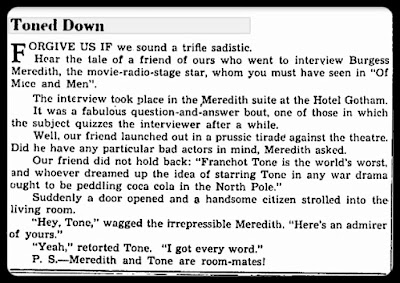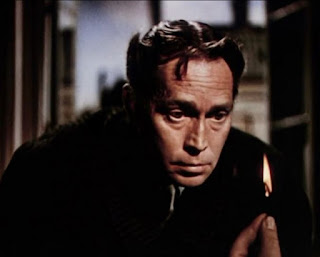The 1935 romantic drama No More Ladies focuses on a smitten girl with a common problem: she sets out to reform a philandering bad boy even though he has no desire to change. A firm believer in true, faithful love, Marcia (Joan Crawford) is pursued by notorious ladies' man Sherry Warren (Robert Montgomery). Franchot Tone is Jim Salston, an endearing and honest man whose marriage was broken up by Sherry. Jim is attracted to Marcia, but she only has eyes for Sherry (even as his eyes rove from woman to woman before and on their honeymoon).
Shortly after their wedding, Sherry goes out with another woman and doesn't return home until the next day. Marcia is devastated. The scene in which Joan Crawford breaks down before pushing those beautiful broad shoulders back and strong head up is completely heart wrenching. Her character's crushed heart is laid bare for viewers to see, and this is one of those classic Crawford scenes that remains with you long after the credits have finished.
Marcia regains her composure and promptly throws a revenge party. Franchot's character Jim attends the party where he wittily banters with his nemesis Sherry (another highlight of this film for me) and stays close by Marcia's side. Marcia is clearly trying to get even with her cheating husband by being flirtatiously suggestive with Jim. Will Marcia abandon her views on marriage? Will she choose to forgive or forget Sherry?
Marcia regains her composure and promptly throws a revenge party. Franchot's character Jim attends the party where he wittily banters with his nemesis Sherry (another highlight of this film for me) and stays close by Marcia's side. Marcia is clearly trying to get even with her cheating husband by being flirtatiously suggestive with Jim. Will Marcia abandon her views on marriage? Will she choose to forgive or forget Sherry?
A few other thoughts on this film...it's a great film, but as far as Tone-Crawford collaborations go, I do enjoy them better together in Dancing Lady, Sadie McKee, and Love on the Run. I always think of character actor Arthur Treacher as the delightful butler in countless Shirley Temple films, so I got a real kick out of him showing up at the revenge party as the even more delightful Lord Knowleton! Also notable, Joan Fontaine makes her film debut in No More Ladies.
No More Ladies is available on DVD on Amazon.

















































